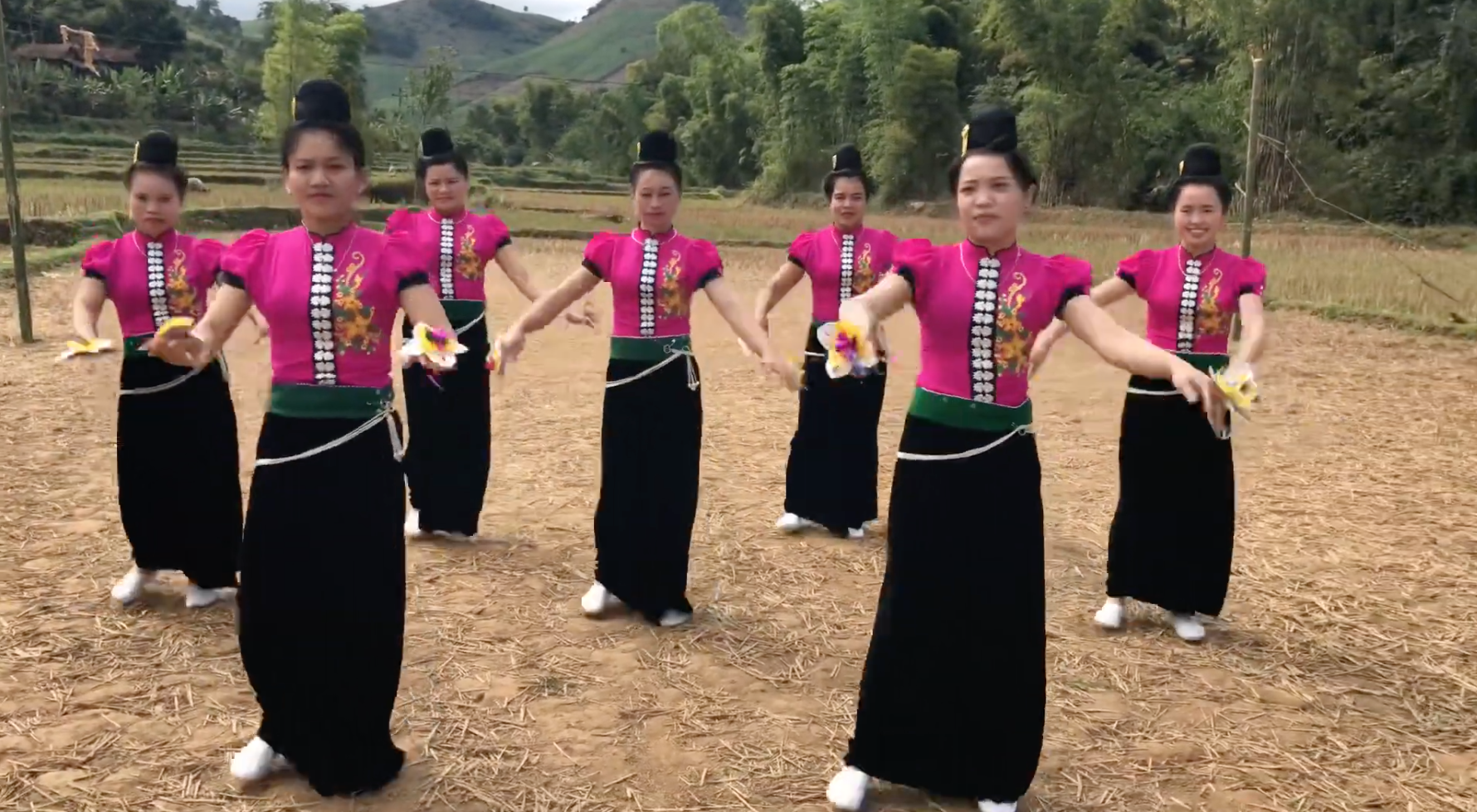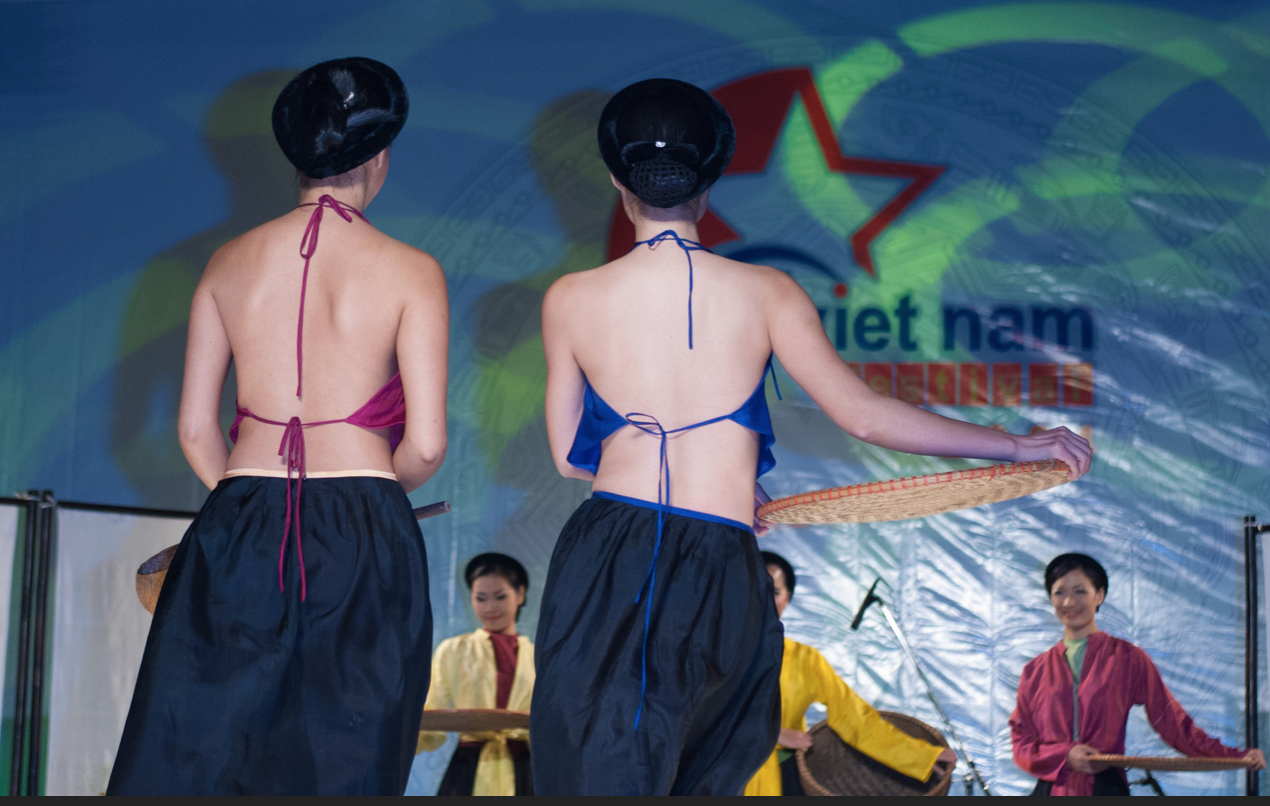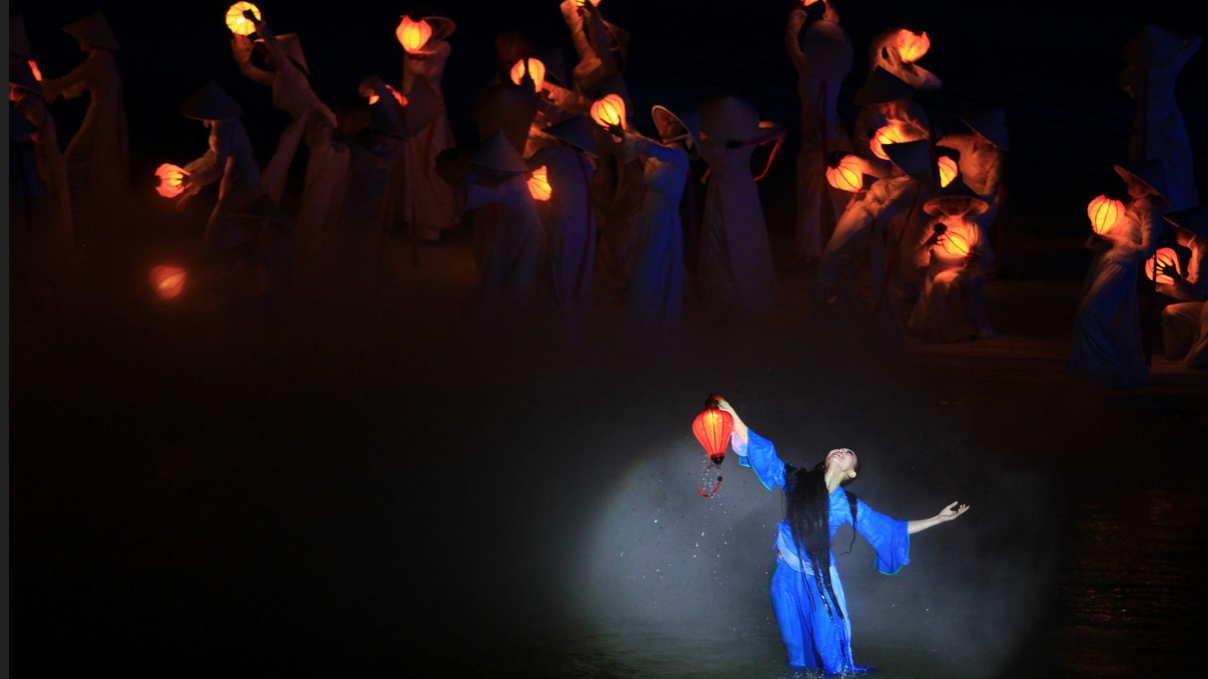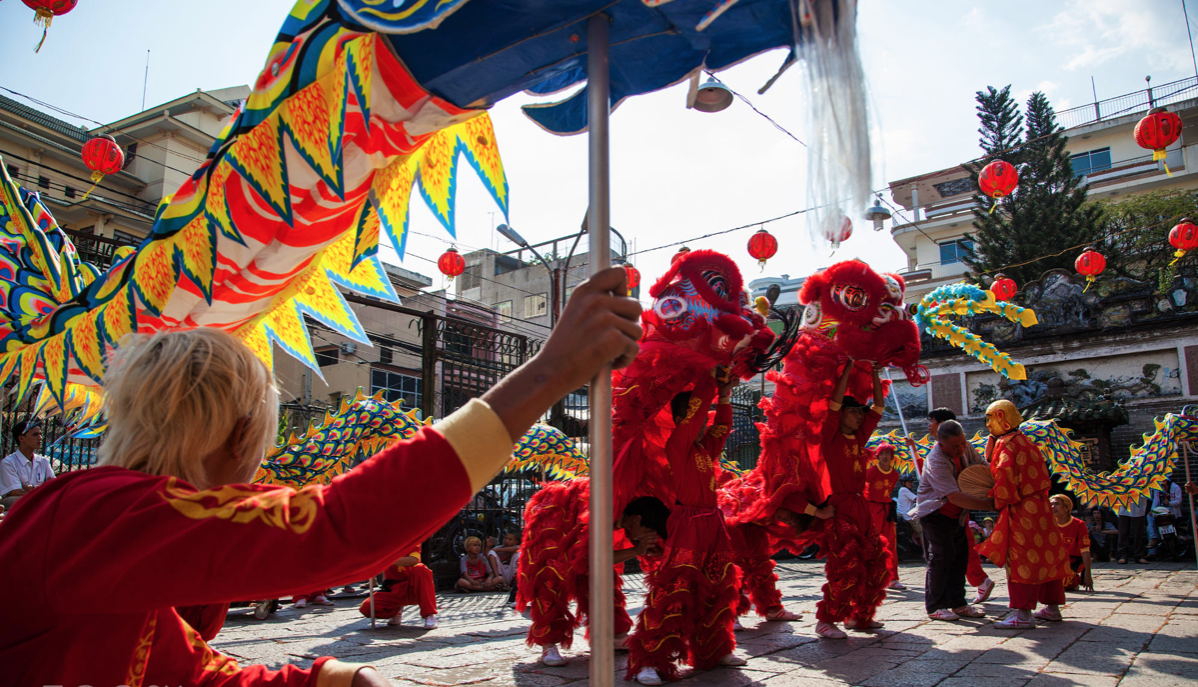Vietnamese Traditional Dance & Folklore Music
Each Vietnamese traditional dance tells a unique story, often reflecting the philosophy of life or offering valuable lessons on culture and ethics. Rooted in the rich traditions of Vietnam’s diverse ethnic groups, these dances are an essential part of the country’s folklore and cultural heritage.
Passed down through generations, this popular folk dances serve as living expressions of the values shared by the 54 ethnic communities across Vietnam. The accompanying folklore music further enhances these performances, capturing the essence of Vietnamese culture. Together, traditional dances and music preserve the nation’s moral teachings, cultural identity, and deep connection to its history and people.
The stories behind the Vietnam’s music and dance are simply a vibrant, living tradition that is deeply woven into daily life & culture of the nation. From the folk music of traditional Vietnamese instruments to the graceful movements of Vietnamese folk dance, the country’s music and dance offer a window into its cultural essence. In this article, we will take you on a journey through Vietnam’s rich folklore music and traditional dance, exploring how these art forms have allowed the Vietnamese people to express their emotions and preserve their cultural heritage across generations.

Vietnamese traditional musical instruments
Vietnam’s traditional music mirrors the country’s rich cultural diversity, much like its varied landscapes. The sounds of Vietnamese instruments, such as the đàn bầu (a single-stringed zither) and the đàn tranh (a 16-stringed zither), are deeply rooted in the nation’s folklore and history. Each instrument produces a distinctive tone, carrying the stories of Vietnam’s past, from sacred rituals to joyous celebrations. Whether it’s the gentle plucking of strings or the haunting hum of the đàn bầu, these instruments create melodies that stir the heart, blending emotion and tradition in every note.
The Vietnamese Folk Songs
The cultures and traditional dances would not be meaningful without the Vietnamese folk songs. They are more than just a type of folk music – Vietnam’s folk songs are an important part of its culture, beyond storytelling through music, they simply passed down through generations to what we hear today, the Vietnamese folk songs, accompanied by traditional instruments, reflect themes of love, nature, and resilience, shaping Vietnam’s cultural identity.

All types of Famous Vietnamese Traditional Dances
Vietnamese traditional dance is rooted by a series of performances to which, every move reveals a story, whether a famous Lion Dance or the graceful Fan Dance—reflect the nation’s rich history and farming heritage. These dances cultures are an integral part of Vietnam’s festivals and rituals, with each region offering its own distinct style.
The Bài Bông dance
The Bài Bông dance originated during the Trần Dynasty and was performed during the peaceful and solemn holidays of the King. Influenced by classical folk music, the dance symbolizes longevity through its graceful movements.
Explore Vietnam’s diverse landscapes, from the lush countrysides of the Mekong to the high mountain vistas of the North through one of our handpicked Vietnam Tours 2025
Múa xòe Tây Bắc (spreading dance)
This dance comes from the Thái ethnic minority and are inspired from the daily life, the folk dances of the Northwestern Thái people have endured through time and remain an essential part of their cultural heritage. The lively gatherings, where men and women of all ages dance around a fire or a jar of wine, are accompanied by the sounds of gongs and drums in a dance called “Xòe khắm khen.”

The famous Bamboo Dance (Múa sạp)
The unique folk dance of the Muong people of Vietnam is performed on joyful occasions, especially during the Spring Festival, and has since spread to other ethnic groups. The essential props for this dance are large, straight bamboo poles and smaller bamboo.

Traditional dances from the central regions
Dances from the Central region of Vietnam often reenact fairy tales, with clearly defined roles, so visitors should take time to enjoy the festive atmosphere and follow the storyline, as these performances require practice and role-playing. Many of these dances are inspired by royal court traditions, but one particularly beautiful and contemporary dance is the múa nón lá (Conical Hat Dance).
Dancers typically wear the ao dai or áo tứ thân and use the iconic conical hats, a signature of Hue women, as the main prop. This dance is graceful and gentle, embodying the spirit of national unity and showcasing the elegance of Hue women with their ao dai and conical hats. It’s a relatively easy dance to learn and perform, as it mainly requires focus and teamwork—just enough to help participants connect with the beauty and cultural heritage of the region.

Danes from Mekong Delta
Southern dances are relatively simple, yet they vividly capture the essence of the region. In these dances, the iconic nón lá(conical hat) reappears, this time paired with the áo bà ba, a traditional garment worn by southern women. Together, these elements take the audience on a journey through the Mekong Delta, an area rich with winding rivers and lush landscapes.
The dance portrays the joy and vitality of the region, introducing iconic scenes such as the Phung Hiep floating market, with its thousands of small boats and bamboo bridges connecting the banks of creeks.
It also highlights the bustling markets of Sa Dec, Soc Trang, and Can Tho, filled with vibrant fruits and local produce. Dancers wear the áo bà ba, a short, simple shirt that complements the graceful form of the southern woman. The nón lá is worn to complete the outfit, symbolizing the national spirit. Made from gồi leaves (similar to palm or coconut trees), the conical hat is lightweight and provides protection from both rain and sun.

The popular Lion - Dragon dance
The lion-dragon dance is one of Vietnam’s most popular traditional dances. Originating from China, it is a lively street folk dance typically performed during festivals, especially the Chinese New Year and the Mid-Autumn Festival. The lion, dragon, and phoenix in the dance symbolize prosperity, longevity, and happiness.

The Fan Dance
The popular, Vietnamese fan dance, or Múa Quạt, is a traditional performance where four or five dancers use fans to mimic the movement of flowers in the breeze.
This dance is a symbol of beauty, elegance, and grace. It is believed to have originated in the open fields and meadows of Vietnam, where its gentle movements reflected the natural surroundings. Over time, the fan dance has gained popularity in neighboring countries such as China and Korea, where it is also performed as a celebration of grace and feminine beauty. The use of fans adds a layer of visual artistry, making the dance both captivating and symbolic. Continue reading on traditional dances in Vietnam





